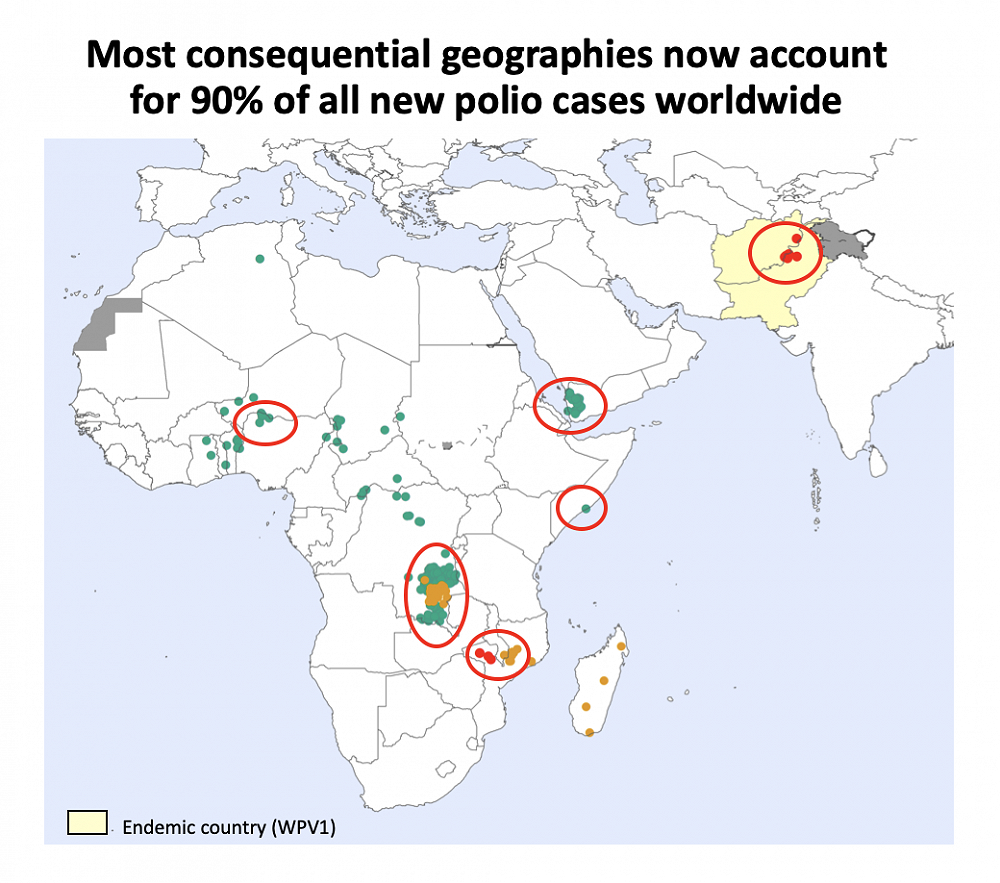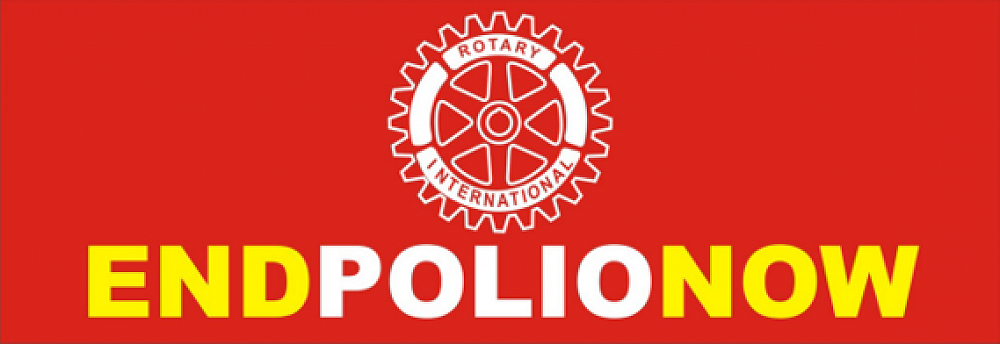
WILL 2023 BE THE YEAR?
One of the goals of the Polio Eradication Strategy 2022–2026 is to permanently interrupt all poliovirus transmission in the last two endemic countries, Afghanistan and Pakistan. There is good evidence that this may occur in 2023.
Article by PDG Murray Verso, End Polio Now Coordinator
In the global effort to eradicate polio, 2022 was a year of contrasts. With polio detections in places such as New York and London and an increase in cases in Pakistan, it may seem that our efforts are going backwards. While detection of any poliovirus is a setback, a deeper analysis reveals a more encouraging story: 2022 saw perhaps some of the most significant progress in the programme’s history and has set up the global polio effort for a unique opportunity to achieve success in 2023.
Endemic wild poliovirus transmission in both Pakistan and Afghanistan is becoming increasingly geographically restricted, with fewer virus lineages remaining active. In Pakistan, for example, all cases in 2022 were concentrated in just six districts of one province, out of a total of 180 districts in the country. But even more importantly: the biodiversity of the virus (i.e. the individually-distinct virus lines that actively circulate in the country) continues to decline.
In 2020, the country was affected by 11 separate and individual chains of transmission. This was reduced to four in 2021, and to just one single chain in 2022. This means that individual virus lines are being successfully knocked out. The situation in Afghanistan is very similar.
Encouragingly, we saw the same thing in other countries as they approached their final eradication efforts, notably India, Nigeria and Egypt.
The bulk of vaccine derived cases are also becoming more restricted, with 90% of all global cases restricted to three places: eastern Democratic Republic of Congo, northern Yemen, and northern Nigeria.

The virus is at its weakest now, and the opportunity to wipe it out completely is now at its greatest. To do this we must focus our efforts on the ‘most consequential geographies’. These are places where immunization rates are low because of poor health systems, conflict, and misinformation. They are also places from where the virus can “escape” to other countries.
There are seven subnational areas around the world that need to be targeted: eastern Afghanistan; southern Khyber Pakhtunkhwa, Pakistan; Tete province and its hinterland in northern Mozambique; eastern Democratic Republic of Congo; northern Yemen; northern Nigeria; south-central Somalia. These areas have some of the highest and most densely populated proportions of zero-dose children (children who are either un- or under-vaccinated) in the world.
A highly infectious disease such as polio spreads easily with population movements. Outbreaks such as in London and New York last year will continue to occur until polio is gone from all areas. It is critical that all countries maintain their national efforts to protect themselves through strong disease surveillance and high vaccination coverage.
However, this year the GPEI (Global Polio Eradication Initiative) programme will focus on reaching zero-dose children in the seven identified areas. These are the areas which will have the greatest impact on the global eradication effort.
There will be challenges reaching the unimmunized children, and also ensuring the necessary financial resources are available, but success this year certainly is possible. As always, Rotarians can help by advocating for the cause and donating funds: Donate to End Polio
In short, despite appearances, during 2022 the world was put on an extremely strong footing to interrupt all remaining chains of poliovirus transmission by the end of 2023 - the goal of the GPEI Strategy 2022-2026.

Gallery
